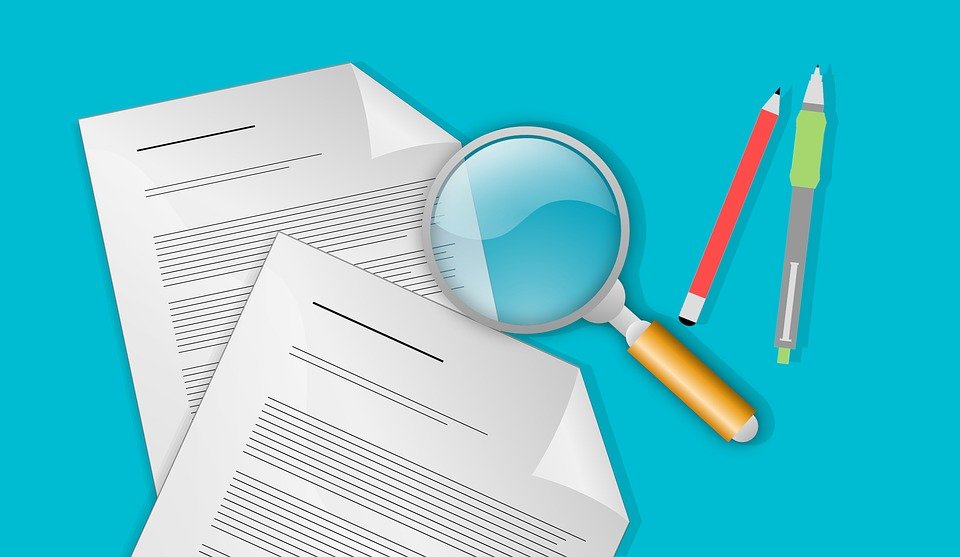What Are The Generally Accepted Accounting Principles (GAAP)?

Are you familiar with the Generally Accepted Accounting Principles (GAAP)? Most business owners have at least heard of this term, but few knew its true meaning. Whether you run a small, medium or large business, though, it’s important to familiarize yourself with GAAP. Doing so will help you create cleaner records of your business’s financial transaction while subsequently driving your business’s future growth and success.
GAAP Explained
GAAP refers to a set of accounting standards used by businesses, nonprofits, government institutions and other organizations. They were created by the Financial Accounting Standards Board (FASB) as well as the Governmental Accounting Standards Board (GASB) for the purpose of standardizing financial accounting.
The purpose of GAAP is to assist businesses and other organizations with their accounting activities. Rather than using their own custom-made accounting processes, for example, businesses can use the processes defined in GAAP.
What Are GAAP Principles?
While GAAP covers a wide range of topics associated with financial accounting, it focuses primarily on accounting principles. The principle of consistency, for example, states that business owners and accountants should use the same methods for their accounting activities. In other words, you shouldn’t use different methods of accounting for the same process. The principle of consistency requires you to use the same method.
The principle of non-compensation, on the other hand, states that positive and negative transactions should be recorded. Whether it’s a credit or debit, all transactions should be recorded in your business’s general ledger. Other common GAAP principles include the principle of continuity, the principle of periodicity, the principle of sincerity and the principle of prudence.
Benefits of Using GAAP
There’s no rule, written or unwritten, stating that you must use GAAP for your business’s financial accounting activities. With that said, following the GAAP principles is beneficial for several reasons. First and foremost, it allows for faster and more efficient accounting. After all, GAAP principles were developed by some of the leading accounting institutions, so it’s safe to assume they are effective.
Second, GAAP allows for greater transparency to ensure that no financial transaction goes unnoticed. As a business owner, you probably know the importance of recording each and every transaction. Mistakes are bound to happen, though. If you don’t use GAAP, you could miss a critical transaction that ultimately costs your business money.
Have anything else that you’d like to add? Let us know in the comments section below!

5 Tips on How to Craft a Business Plan

Are you looking to start a new business in the near future? If so, you’ll need to create a business plan. Whether your business operates locally or online (or both), it will benefit from a well-prepared business plan. The U.S. Small Business Administration (SBA) even says that business plans are the “foundation” of a business’s success. To create an effective business plan to fosters success, follow these five simple tips.
#1) Start With an Executive Summary
Although there are numerous ways to structure a business plan, you should typically begin with an executive summary. The executive summary is an opportunity to describe the general focus of your business and what it does. It doesn’t have to be particularly long. On the contrary, most executive summaries consume just a single page of a business plan.
#2) Detail Your Business in the Company Overview
While you can describe your business in the executive summary, you should go into deeper detail about your business in the company overview section. The company overview section covers all the small details about your business, including its location, history, market and even structure (e.g. LLC vs S-Corp or C-Corp).
#3) Highlight Products and Services
Of course, you should also highlight your business’s products or services in your business plan. According to the SBA, an effective business plan should explain how customers or clients will benefit from purchasing the business’s products or services. In other words, you should create an “elevator pitch” that promotes your business’s products or services.
#4) Reveal Current and Future Projected Finances
Financial information is an important element of an effective business plan. Most businesses require capital to get up and running. In your business plan, information about your business’s current and future projected finances. When you apply for a loan — or other forms of lending-based funding — you can give the lender a copy of your business plan. Assuming it contains your business’s financial information, it will likely have a positive impact on your ability to secure startup capital.
#5) Include a Market Analysis
Don’t forget to include a market analysis in your business plan. What is a market analysis exactly? This component of a business plan delves into your business’s target market. In other words, it reveals your business’s ideal, target audience of customers as well as their respective location.
Have any other tips on creating a business plan that you’d like to share? Let us know in the comments section below!

How to Enable Multicurrency in Quickbooks

Does your business accept payments in multiple currencies? Whether you sell products online or locally, customers may want to pay using a non-U.S. currency. If you’re planning to accept multiple currencies, however, you’ll need to track those transactions accordingly. Thankfully, Quickbooks offers a Multicurrency feature that’s designed specifically for tracking foreign currencies.
Steps to Turn on Multicurrency
In Quickbooks Desktop, you can enable multicurrency in just a few easy steps. After logging in to your Quickbooks account and accessing the home screen, click the “Edit” menu and choose “Preferences.” Next, find and click the link for “Multiple Currencies” on the left-hand menu. You can then select the “Company Preferences” tab and choose “Yes, I use more than one currency.” Finally, choose your home currency — the currency with which your business’s primary audience uses — in the drop-down menu.
How to Add Currencies to Customers
After enabling multicurrency, you’ll need to add the appropriate foreign currency to your customers. This is done by clicking the “Customers” menu and selecting “Customer Center.” Next, choose “New Customer: job,” followed by “New Customer.” You can then choose the option to assign a customer name and currency, followed by clicking “OK.”
Keep in mind, Quickbooks only allows you to add one currency to any customer. If a customer uses multiple currencies, you must create a separate foreign currency profile. So, how do you set up a new foreign currency profile? This is done by clicking the “Lists” menu and selecting “Chart of Accounts.” Next, right-click on an open area in the chart of accounts and choose “New.” You’ll then be prompted to give the account a type and name, after which you can click “Save & Close” to complete the process.
Downloading Exchange Rates
In Quickbooks, only the exchange rates for your business’s active currencies are downloaded automatically. You can manually download exchange rates, however, by accessing the “Lists” menu, followed by “Currency List,” and selecting the “Activities” button. After clicking the “Download Latest Exchange Rates,” you’ll have an up-to-date profile of the latest exchange rates.
Don’t let your business lose sales because it only accepts a single currency. Take advantage of Quickbooks’s Multicurrency feature to attract and retain more customers. Available in Quickbooks Desktop, it’s a highly useful feature that will foster long-term success for your business.
Did this tutorial work for you? Let us know in the comments section below!

Gross Profit: What You Need to Know

Gross profit is a performance metric used in financial accounting that provides insight into a business’s profitability. From small family-owned businesses to Fortune 500 companies, all businesses should calculate their gross profit. Doing so can help entrepreneurs and business owners optimize their operations for higher profits. In this post, you’ll learn more about gross profit, including what it means and how it’s calculated.
What Is Gross Profit?
Also known as gross income, gross profit refers to the profit generated by a business during a specific time frame. In other words, it’s the revenue a business generates minus certain expenses. Gross profit specifically takes into account the business’s cost of goods sold (COGS) during the given time frame.
How to Calculate Gross Profit
As a business owner, you can calculate your organization’s gross profit by subtracting COGS from your revenue. If you want to calculate your business’s gross profit from 2018, for example, take your business’s total revenue from 2018 and subtract it by your business’s COGS.
COGS includes all variable expenses that can either increase or decrease depending on your business’s operations. If an expense is directly associated with your business’s operations — and it can fluctuate depending on your business’s level of output — it’s considered a variable expense and, thus, used in the gross profit formula. Common examples of variable expenses classified as COGS include the following:
- Labor
- Credit card transaction fees
- Shipping
- Packaging supplies
- Sales commissions
- Inventory
- Materials
- Equipment
- Utilities
Let’s say your business generated $1 million in revenue in 2018 and its COGS for that year was $200,000. Using the aforementioned formula, your business’s gross profit for 2018 would be $800,000. You subtract $200,000, which is your business’s COGS, from $1 million, which is your business’s revenue, resulting in a 2018 gross profit of $800,000. As you can see, calculating gross profit is relatively simple and straightforward. If you know your business’s revenue and COGS, you can calculate its gross profit.
Gross Profit vs Net Profit: What’s the Difference?
Gross profit is often confused with net profit, but they aren’t necessarily the same. Net profit is calculated by taking your business’s revenue and subtracting it by all your business’s expenses, whereas gross profit is calculated by taking your business’s revenue and subtracting it by your business’s COGS. Regardless of the market or industry in which your business operates, it will probably incur expenses besides COGS. Net profit takes into account all your business’s expenses, whereas gross profit only takes into account your business’s COGS.
Have anything else that you’d like to add? Let us know in the comments section below!

Fixed Assets vs Current Assets: What’s the Difference?

The terms “fixed asset” and “current asset” are often used interchangeably in financial accounting. While they both refer to resources owned by a business, though, they aren’t the same. Fixed assets are different than current assets, and it’s important to familiarize yourself with their nuances. Only then can you properly record your business’s finances.
What Is a Current Asset?
A current asset is a resource owned by your business that you intend to convert into cash or spend within 12 months. Inventory, for example, is typically considered a current asset. If you operate a retail store, your business probably owns inventory that it plans to sell within 12 months.
Cash is another example of a current asset. Most businesses don’t hold onto their cash. Rather, they invest it back into their business’s operations by purchasing relevant products and services. Regardless, the defining characteristic of a current asset is that it’s spent or converted into cash within 12 months.
Current assets are considered critically important to a business’s operations. Without them, you won’t have the means of funding your business and purchasing necessary products or services. Therefore, you should closely track your business’s current assets so that you’ll have a better understanding of its financial health.
What Is a Fixed Asset?
A fixed asset, on the other hand, is a resource owned by your business that you do not intend to sell or otherwise convert into cash in a short period of time.
Fixed assets differ from current assets in the sense that they can’t be easily converted into cash in a short period of time. Real property, for example, is considered a fixed asset. It’s a resource that’s essential to a business’s operations, yet it’s also something that can’t be easily converted into cash.
There are both tangible and intangible fixed assets. As you may have guessed, real property is a tangible asset because it’s something that you can see and touch. Trademarks and other forms of intellectual property are considered intangible assets because you can’t see or touch them.
It’s also worth noting that fixed assets depreciate over time, whereas current assets generally retain their value. The depreciation of fixed assets is recorded in journal entries by debiting the appropriate depreciation expense account. The good news is that asset depreciation is tax deductible — but only if you record it properly.
Have anything else that you’d like to add? Let us know in the comments section below!

Home Office Tax Deduction: Simplified vs Regular Method

Are you a business owner or freelancer who works out of a home office? If so, you should take advantage of the home office deduction when filing your federal income taxes. In the United States, business owners and freelancers who use a home office — or any other area of their home — for business-related purposes can deduct some of the associated expenses from their federal taxes. With that said, the Internal Revenue Service (IRS) supports two different methods when claiming a home office: the simplified method and the regular method.
What Is the Regular Method?
If you’ve claimed the home office tax deduction in a year prior to 2012, you should already know the regular method. It wasn’t until 2013 when the IRS began offering the simplified method.
The regular method involves calculating the cost of your home office, and using that figure as the basis for your deduction. In other words, if your home office consists of 25% of your home’s total space, and you use your home office 100% of the time for business-related purposes, you can claim one-quarter of your total mortgage or rental payments. Additionally, you can claim an appropriate amount for related expenses like insurance, utilities and maintenance.
What Is the Simplified Method?
The simplified method lives up to its namesake by offering an easier and simpler way to calculate the home office tax deduction. Under the simplified method, you’ll receive a deduction of $5 per square feet of home office space — with a maximum of 300 square feet.
Many business owners prefer the simplified method because it doesn’t require calculating the cost of rental or mortgage payments. With that said, you should compare the total deduction of both methods to determine which one is the highest.
What Are the Requirements for Claiming the Home Office Tax Deduction?
Whether you use the regular method or the simplified method, the IRS has a few requirements for claiming the home office tax deduction. First, your home office must be the primary place in which you run your business. If you spend most of your work hours in a commercial office while performing just a fraction of your work in a home office, you won’t be eligible for the home office tax deduction. Rather, you must perform most of your business’s work in your home office.
Second, your home office must be used exclusively for business-related purposes. You cannot use your home office for personal or recreational purposes if you want to claim the home office tax deduction on your federal taxes.
Have anything else that you’d like to add? Let us know in the comments section below!

What Is a Provision in Accounting?

The term “provision” is used extensively in financial accounting activities. Business owners, for example, often use provisions to better predict their future profits. To effectively use provisions, though, you must first familiarize yourself with this term and what it means.
Overview of Provisions
In accounting, a provision is a record of a probable liability in the future. If you believe your business will owe money in the future, you can record it as a provision. At the same time, you can go ahead and set aside money to cover the liability if it occurs.
Like conventional liabilities, provisions are recorded on a balance sheet. They are placed alongside other liabilities and assets, allowing businesses to better forecast their future profits.
You can think of a provision as a liability in which neither the amount nor due date are certain.
Provisions can be defined by the following characteristics:
- Financial obligation from a previous sale or transaction
- Probability that the business will owe money for the sale or transaction at a future date
- The business can make a reliable estimate regarding the amount of the future liability
- The business accepts the financial obligation to cover the future liability
The Purpose of Provisions
The reason business owners use provisions is to predict their future prospects with greater accuracy. Without provisions, business owners may overlook future liabilities if they don’t know the details about those liabilities. And if they don’t record these future liabilities on their balance sheet, business owners could be hit with unforeseen expenses that hurts their ability to grow their organization. Provisions allow business owners to keep a detailed record of all their liabilities, including probable future liabilities.
Provision vs Accrued Expense: What’s the Difference?
Some business owners assume that provisions are the same as accrued expenses, but this isn’t necessarily true. Accrued expenses are expenses that a business has incurred but hasn’t paid, whereas provisions are probable liabilities in the future. Therefore, the difference between these two accounting terms is that accrued expenses have already been incurred, while provisions have not been incurred.
To recap, a provision is a probable future liability that’s recorded on a business’s balance sheet. It’s used to better predict a business’s financial health by ensuring that uncertain liabilities are accounted for. Hopefully, this gives you a better idea of provisions and how they are used.
Have anything else that you’d like to add? Let us know in the comments section below!

The Beginner’s Guide to Accounting Reconciliations

It’s not uncommon for business owners and professional accountants to make mistakes when recording financial transactions. Mistakes are bound to happen, but when they involve finances, it can have catastrophic results for the respective business. Entering a lower amount for a credit, for example, will lower the business’s income — at least on paper. While there’s no way to completely avoid mistakes when recording your business’s financial transactions, reconciliation will allow you to fix them in a timely manner, thereby mitigating the damage they cause.
What Is Reconciliation?
In accounting, reconciliation refers to a transaction-checking process in which you compare two sets of records to ensure they match. In other words, when you reconcile a transaction, you check it against two sets of records. A common example of reconciliation is checking your checkbook at the end of the month against a bank statement. As you go through the transactions recorded in your checkbook, you should check the respective bank account statement to ensure they are all the same.
Why Should I Reconcile My Business’s Financial Transactions?
Reconciliation is important because it allows you to identify accounting mistakes. Even if you use extreme caution when recording your business’s financial transactions, you’re bound to make a mistake sooner or later. Rather than allowing these mistakes to go unnoticed, you can reconcile your financial transactions. Cross-checking the transactions with another set of records allows you to see exactly which ones are wrong, and if you discover any inaccurate or incorrect transactions in your business’s books, you can fix them.
How to Perform Reconciliations
If you use the Quickbooks accounting software, you can easily perform reconciliations in just a few steps. In Quickbooks Desktop, click the “Banking” menu and choose “Reconcile.” Next, click the drop-down menu for “Account” and select the account you wish to reconcile. You will then need to enter the ending date for the statement.
On the next screen, compare the opening balance listed on the statement with the amount displayed in the “Beginning Balance” field. When finished, choose the option for “Continue to open the Reconcile.”
Quickbooks will then proceed with the reconciliation process. During this process, the difference for your transactions should be zero. If an amount other than zero is displayed, the entry is wrong and, thus, you should make a note of the difference.
Have anything else that you’d like to add? Let us know in the comments section below!

5 Ways to Increase Your Business’s Customer Retention Rate

What’s your business’s customer retention rate? If most customers only make a single purchase, you’ll struggle to grow and expand your business. Statistics show that an average of 80% of a business’s sales come from just 20% of its customers. Therefore, you should consider the following tips to increase your business’s customer retention rate.
#1) Offer Exceptional Customer Service
The single most important thing you can do to increase your business’s customer retention rate is to offer exceptional customer service. By going above the expectations of customers, you’ll set your business apart from its competitors — all while encouraging customers to stay with your business and make additional purchases in the future.
#2) Create a Loyalty Rewards Program
Another way to retain more of your business’s customers is to create a loyalty rewards program. In the most basic sense, a loyalty rewards program is any program that rewards customers for making additional purchases. You can use a basic points-based system, for example, in which customers are rewarded with points for making purchases. Customers can then redeem these points for discounts, free products or services or other items.
#3) Reach Out to Existing Customers
Something as simple as reaching out to your business’s existing customers — whether by phone, email, social media or elsewhere — can help you achieve a higher customer retention rate. If a customer forgets your business, it’s unlikely he or she will return to make additional purchases in the future. Therefore, you should proactively reach out to existing customers with relevant marketing messages.
#4) Offer Limited-Time Promotions
Of course, offering limited-time promotions can entice your business’s existing customers to make a purchase and, therefore, increase your business’s customer retention rate. Regardless of what products or services you sell, consider creating promotions that are only good for a limited period of time. When customers see these deals, they’ll feel more inclined to take action so that they don’t miss the opportunity to save money.
#5) Encourage Referrals
You can even use referrals to increase your business’s customer retention rate. If a customer is happy with your business, ask him or her for referrals. Any new customers referred to your business may stay with your business for a long period of time after receiving a recommendation from a friend or family member. These are just a few ways to increase your business’s customer retention rate.
Have any other customer retention tips that you’d like to share? Let us know in the comments section below!

How Do I Customize Invoice Templates in Quickbooks?

When using Quickbooks to handle your business’s accounting needs, you can take advantage of the software’s built-in invoice templates. Rather than trying to manually create invoices, for example, you can simply use one in Quickbooks. As a business owner, though, you’ll probably want to customize your invoices so that customers immediately associate them with your business’s brand. So, how do you customize invoice templates in Quickbooks?
What Is an Invoice Template?
Before we reveal how to customize an invoice template in Quickbooks, let’s first go over the basics of this document. An invoice template is a document that shows the various fields and other visual elements of your business’s sales invoices. You can access them through the “Lists” menu, followed by choosing “Templates.” Here, you’ll be able to choose from one of several invoice templates, all of which are completely customizable.
Steps to Customizing an Invoice Template
To customize an invoice template, you must first choose one of the templates under the “Templates” section of the “Lists” menu. After selecting your preferred invoice template, click “Manage Templates” in the “Formatting” tab. You can then customize the template so that it reflects your business’s brand.
One of the most important things you should do when customizing an invoice template in Quickbooks is adding your business’s logo to it. This is done by clicking the “Select Logo” button, after which you can upload an image — Intuit recommends using JPG format — to use as your business’s logo in the invoice template. Once the image has been uploaded, click the “Use logo” button.
You can also change the colors and fonts for the text used in the invoice template. To change the color of your invoice template, click the drop-down menu for “Select Color Scheme.” You can then select from one of the built-in color schemes offered by Quickbooks.
Quickbooks allows you to use different fonts for different elements of your invoice template. You can use Arial for the Title, for example, and Times New Roman for your business’s name and address. To customize the font of your invoice template, click “Change Font” and select your desired font. When finished, select the element of the invoice template for which you want to use the previously selected font, such as Title, Company Name, Company Address or Labels.
Have anything else that you’d like to add? Let us know in the comments section below!
